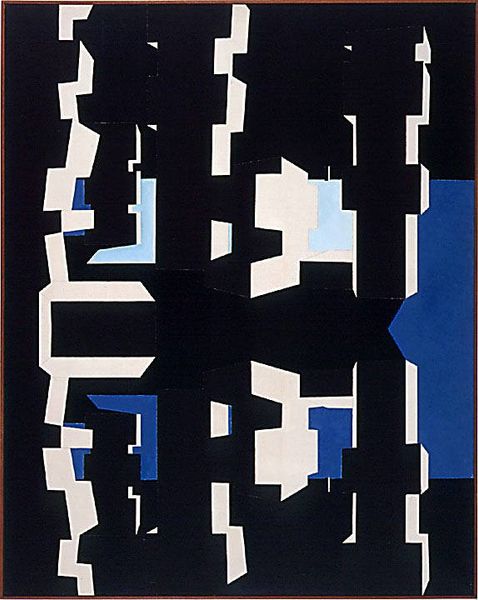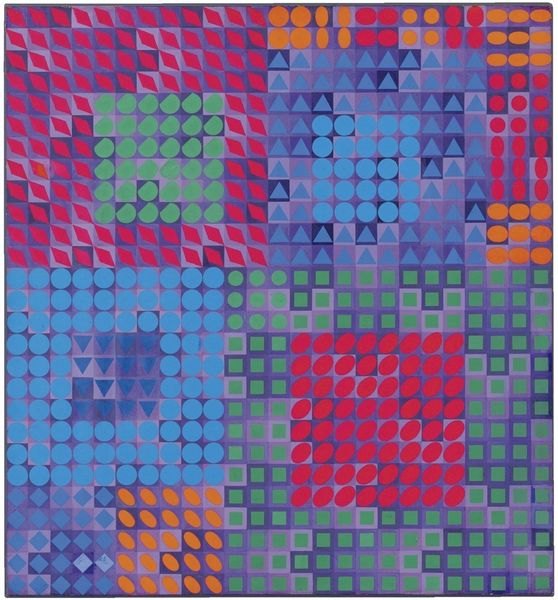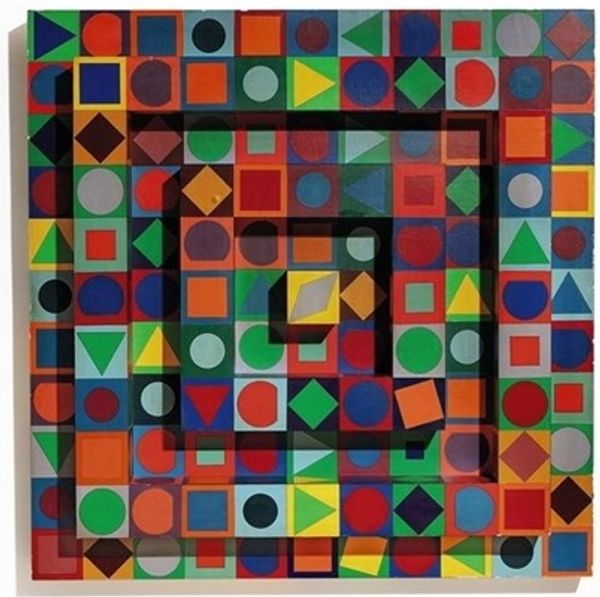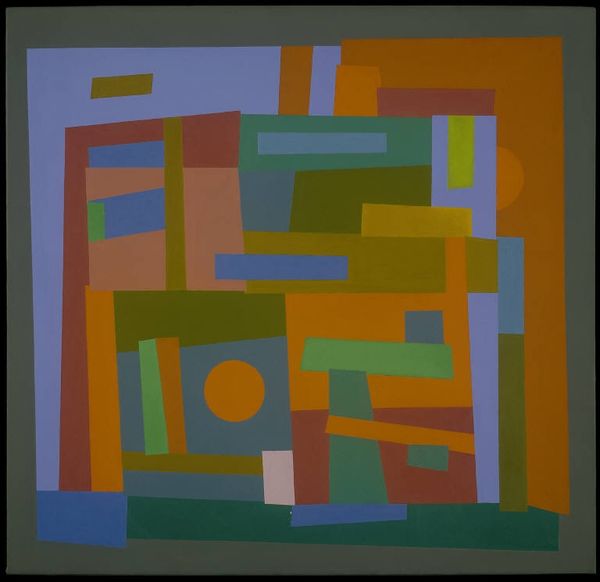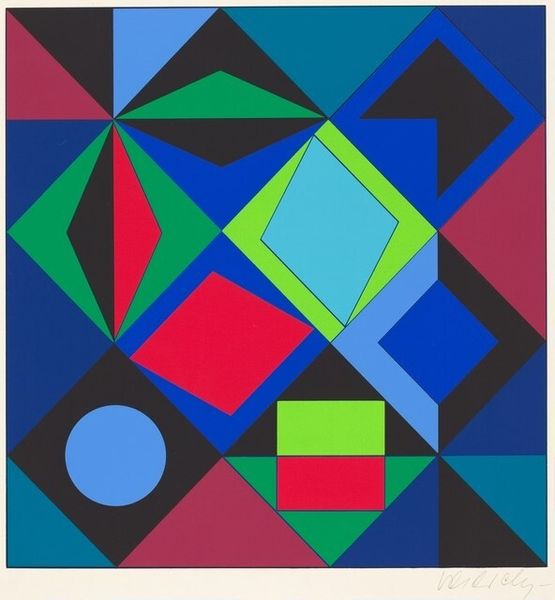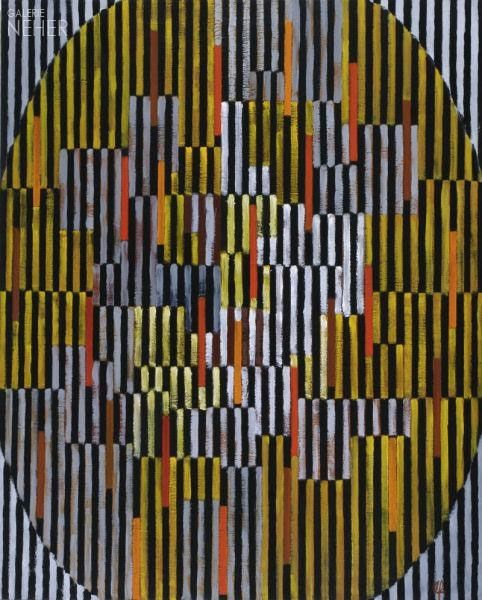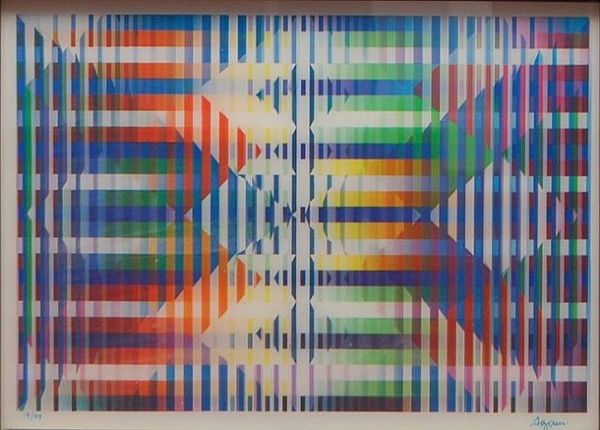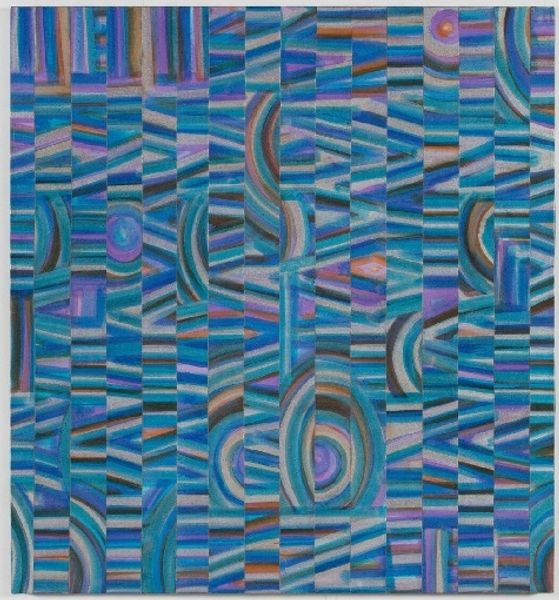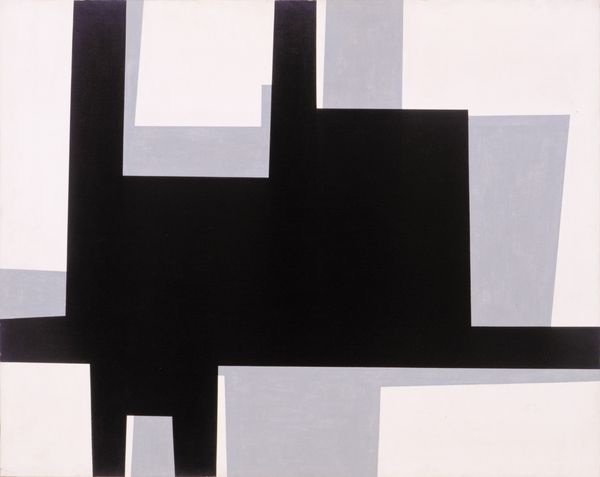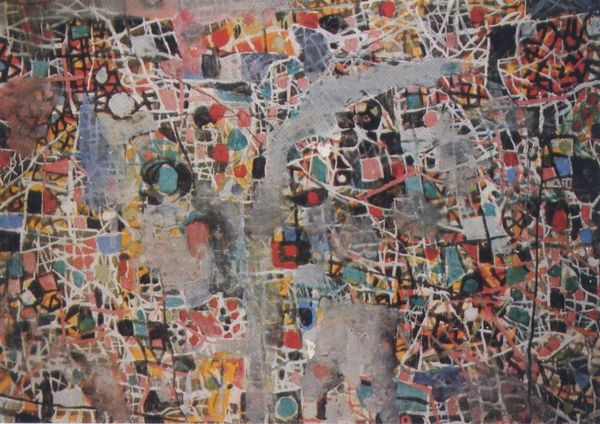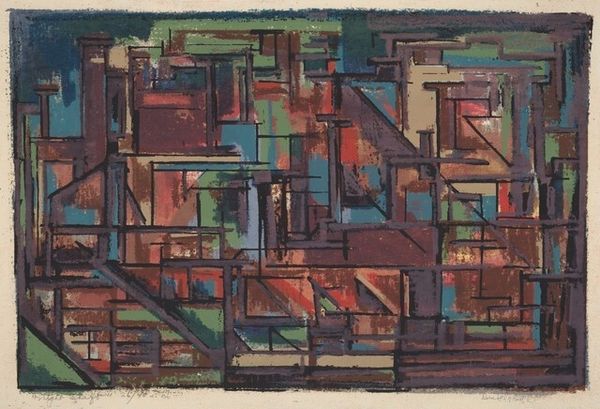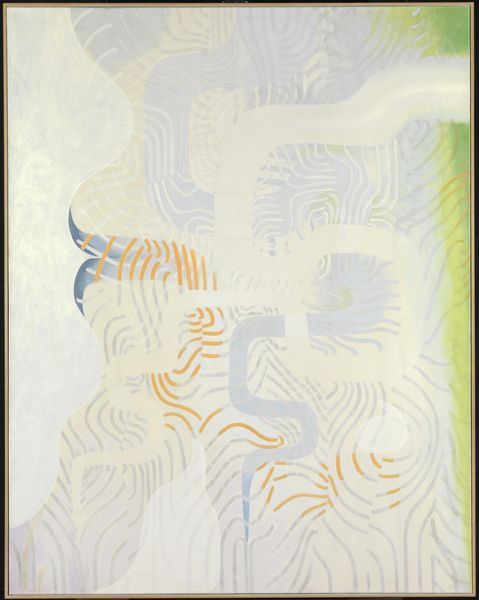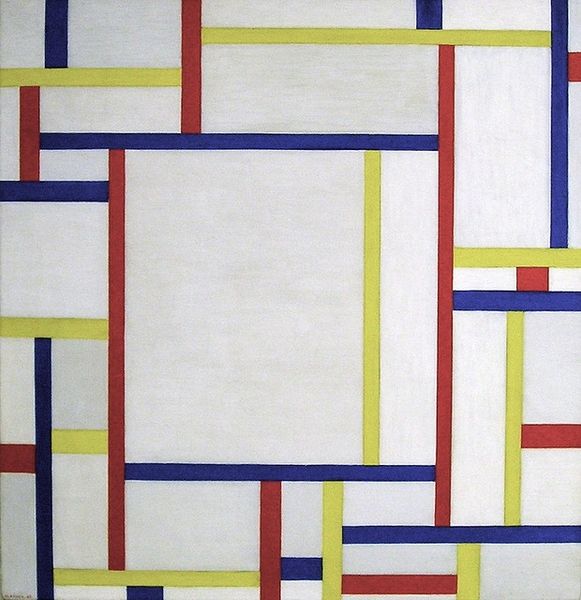
painting, acrylic-paint
#
painting
#
geometric composition
#
mixed mediaart
#
acrylic-paint
#
geometric pattern
#
abstract pattern
#
geometric
#
geometric-abstraction
#
abstraction
#
pop-art
Dimensions: 90 x 100 cm
Copyright: Gil Nicolescu,Fair Use
Editor: This is "Flux" by Gil Nicolescu, painted in 1968 using, it seems, primarily acrylic. I'm struck by how meticulously crafted the squares and geometric lines are. How do you read this work? Curator: From a materialist perspective, I immediately think about the means of production at play here. Consider the very deliberate layering of paint. Look closely. Are we meant to admire only the finished "high art" object, or can we also appreciate the repetitive, almost industrial process Nicolescu employed to create these precise geometric forms? Editor: That's interesting! It does seem like it's somewhere between handmade and machine-made. What about the choice of such a rigid form – the square – over, say, organic shapes? Curator: Ah, the square! It became very popular in art in the early to mid 20th century. Its right angles are so different from what nature actually produces, like the perfection we’d associate with a tool instead of a wild entity. With that perfection in mind, consider how the rise of industry shaped the artist's worldview and how these rigid geometric compositions mirror the mechanical age. It can almost feel as if you’re looking at the grid of an urban plan as opposed to some kind of rural horizon. Editor: I hadn’t thought of the connection to urban planning and the industrial process so directly. So, by focusing on materials and production, we can link it to broader societal changes? Curator: Precisely! Art isn’t just about aesthetics. It's also about labor, materiality, and its relationship to consumption. Understanding those facets helps unpack its true significance. Nicolescu, through a careful application of acrylic paint and a geometric composition, almost encourages the viewer to engage with those ideas surrounding manufacture in a rapidly modernizing world. Editor: I see. So it moves beyond a nice geometric picture to an interaction with the history of labor. I'll definitely look at geometric abstraction differently now! Curator: Glad to hear it.
Comments
No comments
Be the first to comment and join the conversation on the ultimate creative platform.
